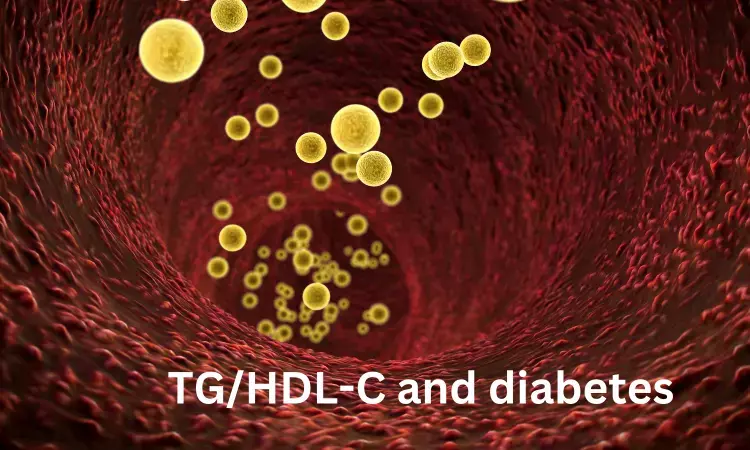- Home
- Medical news & Guidelines
- Anesthesiology
- Cardiology and CTVS
- Critical Care
- Dentistry
- Dermatology
- Diabetes and Endocrinology
- ENT
- Gastroenterology
- Medicine
- Nephrology
- Neurology
- Obstretics-Gynaecology
- Oncology
- Ophthalmology
- Orthopaedics
- Pediatrics-Neonatology
- Psychiatry
- Pulmonology
- Radiology
- Surgery
- Urology
- Laboratory Medicine
- Diet
- Nursing
- Paramedical
- Physiotherapy
- Health news
- Fact Check
- Bone Health Fact Check
- Brain Health Fact Check
- Cancer Related Fact Check
- Child Care Fact Check
- Dental and oral health fact check
- Diabetes and metabolic health fact check
- Diet and Nutrition Fact Check
- Eye and ENT Care Fact Check
- Fitness fact check
- Gut health fact check
- Heart health fact check
- Kidney health fact check
- Medical education fact check
- Men's health fact check
- Respiratory fact check
- Skin and hair care fact check
- Vaccine and Immunization fact check
- Women's health fact check
- AYUSH
- State News
- Andaman and Nicobar Islands
- Andhra Pradesh
- Arunachal Pradesh
- Assam
- Bihar
- Chandigarh
- Chattisgarh
- Dadra and Nagar Haveli
- Daman and Diu
- Delhi
- Goa
- Gujarat
- Haryana
- Himachal Pradesh
- Jammu & Kashmir
- Jharkhand
- Karnataka
- Kerala
- Ladakh
- Lakshadweep
- Madhya Pradesh
- Maharashtra
- Manipur
- Meghalaya
- Mizoram
- Nagaland
- Odisha
- Puducherry
- Punjab
- Rajasthan
- Sikkim
- Tamil Nadu
- Telangana
- Tripura
- Uttar Pradesh
- Uttrakhand
- West Bengal
- Medical Education
- Industry
Lowering TG/HDL-C ratio can prevent prediabetes and Type 2 diabetes

Iran: A study published in Diabetology and Metabolic Syndrome has concluded that in normoglycemic individuals, increasing triglyceride to high-density lipoprotein cholesterol ratio (TG/HDL-C) is tied unfavorably to incident prediabetes and Type 2 Diabetes Mellitus (T2DM), especially among women.
Dyslipidemia is associated with Insulin Resistance (IR). Previous studies have suggested that TG/HDL-C ratio is a diagnostic or screening tool for conditions like the risk of metabolic syndrome, Insulin Resistance, and Type 2 Diabetes Mellitus. Prediabetes and T2DM are tied to the high burden of non-communicable diseases, including cardiovascular and chronic kidney disease.
Considering the above background, researchers determined the association between TG/HDL-C and individuals at risk of incident prediabetes and T2DM.
Using Cox proportional hazard regression analyses, the team analysed the association of TG/HDL-C with incident prediabetes and T2DM among normoglycemic men and women, including 5064 subjects with 2247 men aged ≥ 20 years. They also assessed lipid ratio with incident T2DM among 1414 prediabetic subjects.
The results of the study could be summarised as follows:
- The median follow-up duration was 11.2 years.
- Two thousand one hundred forty new cases of prediabetes, including 1070 men and 360 incident T2DM, including 152 men, were identified.
- Among prediabetics, 574 new cases of T2DM (252 men ) were identified.
- The higher quartiles of TG/HDL-C had higher risks of incident prediabetes and T2DM (normoglycemic individuals) and incident T2DM (prediabetic population).
- The hazard ratios (HRs) for the fourth quartiles were 1.37, 1.92, and 1.57, respectively.
- Among prediabetic men,TG/HDL-C lost its association with incident T2DM
- The corresponding value for incident Type 2 DM in prediabetic individuals was 1.01.
- TG/HDL-C and incident prediabetes "association" and T2DM persisted even after replacing FPG with an IR index.
They said a 1 unit increase in TG/HDL-C among the normoglycemic population is significantly associated with incident prediabetes and T2DM.In the normoglycemic population, increasing TG/HDL-C value was unfavorably associated with incident prediabetes and T2DM.
TG/HDL-C was tied to incident T2DM in prediabetics.
They wrote that there is a correlation between TG/HDL-C and different states of dysglycemia independent of HOMA-IR.
Further reading:
Tohidi et al. Association of triglycerides to high-density lipoprotein cholesterol ratio to identify future prediabetes and type 2 diabetes mellitus: over one-decade follow-up in the Iranian population. Diabetol Metab Syndr 15, 13 (2023). https://doi.org/10.1186/s13098-023-00988-0
BDS, MDS in Periodontics and Implantology
Dr. Aditi Yadav is a BDS, MDS in Periodontics and Implantology. She has a clinical experience of 5 years as a laser dental surgeon. She also has a Diploma in clinical research and pharmacovigilance and is a Certified data scientist. She is currently working as a content developer in e-health services. Dr. Yadav has a keen interest in Medical Journalism and is actively involved in Medical Research writing.
Dr Kamal Kant Kohli-MBBS, DTCD- a chest specialist with more than 30 years of practice and a flair for writing clinical articles, Dr Kamal Kant Kohli joined Medical Dialogues as a Chief Editor of Medical News. Besides writing articles, as an editor, he proofreads and verifies all the medical content published on Medical Dialogues including those coming from journals, studies,medical conferences,guidelines etc. Email: drkohli@medicaldialogues.in. Contact no. 011-43720751


